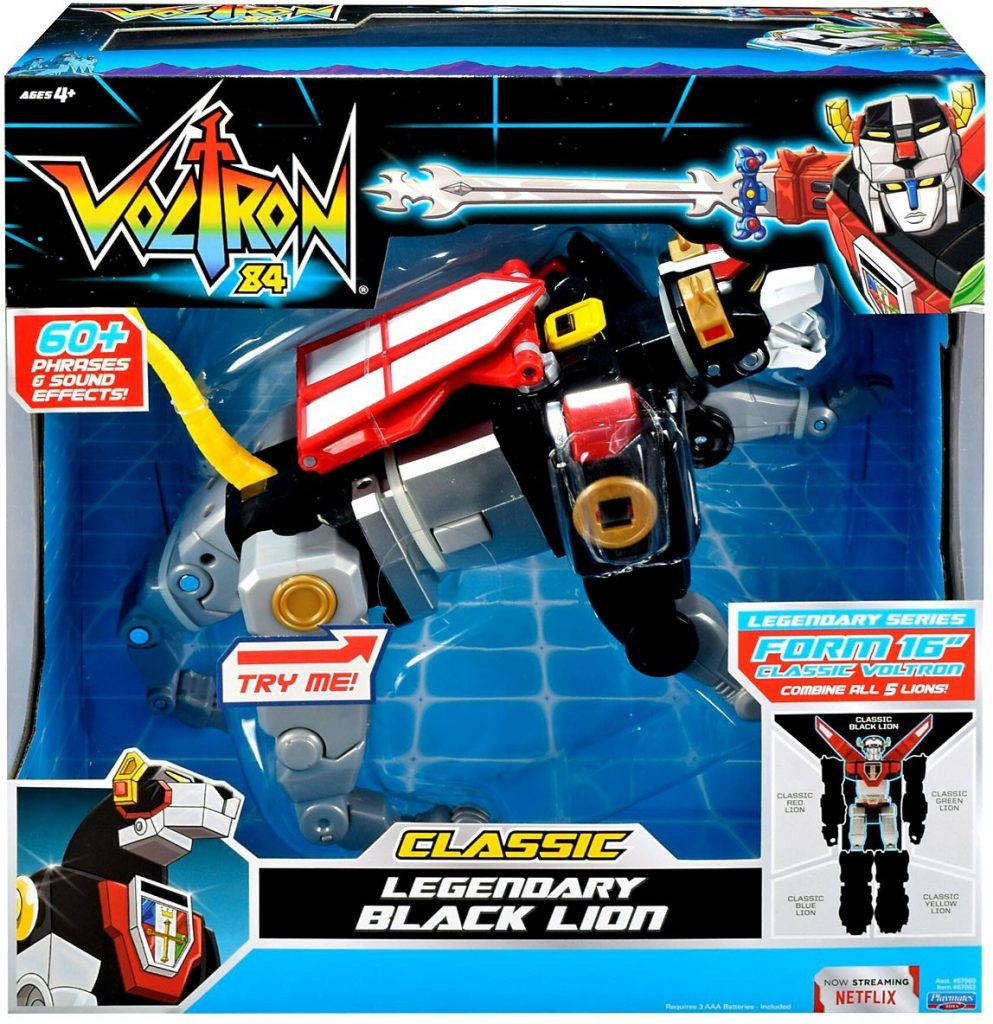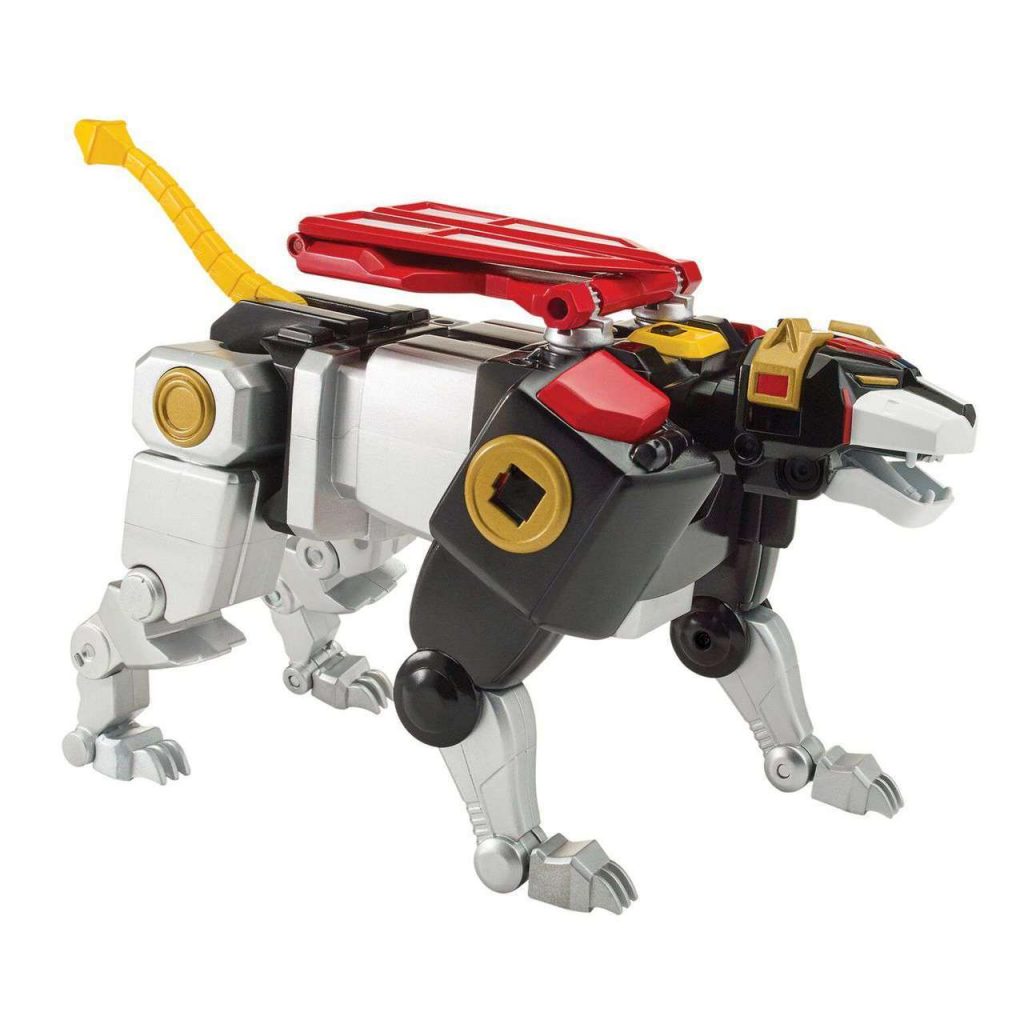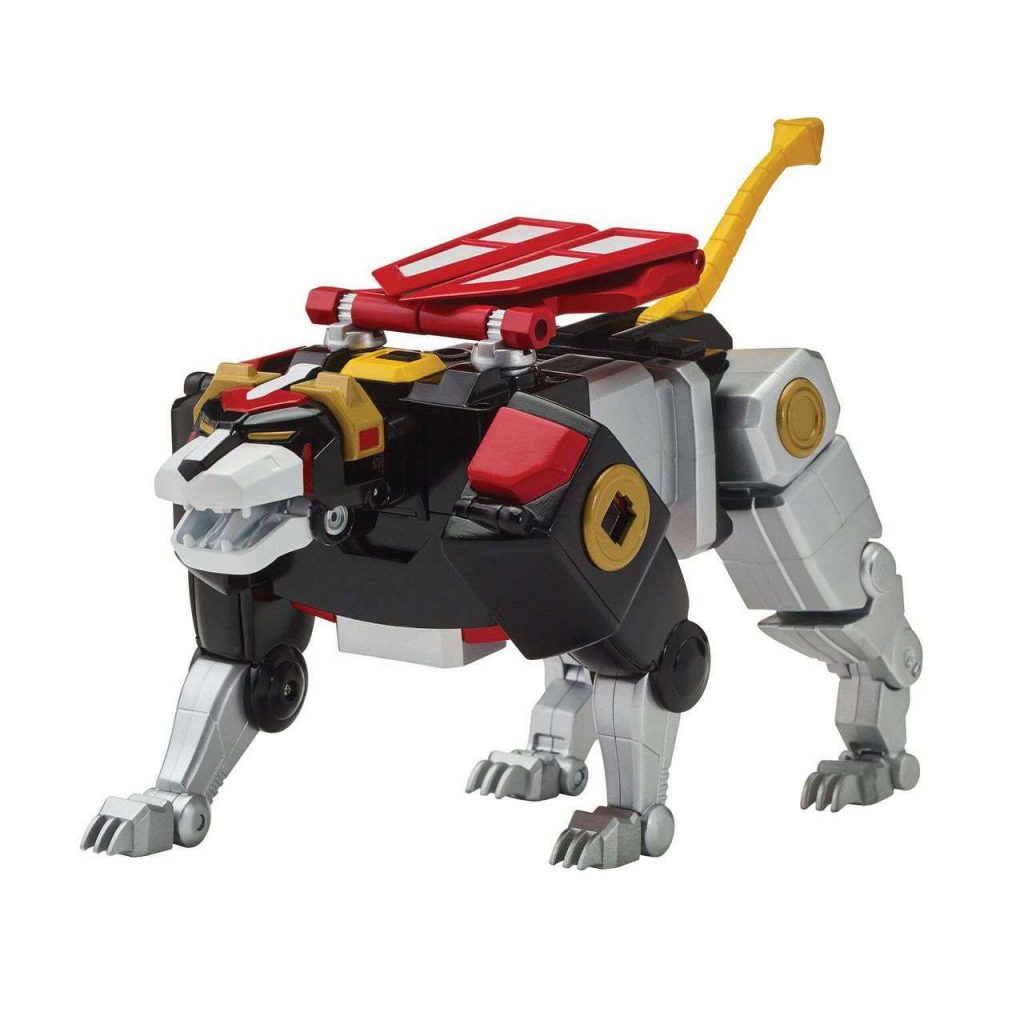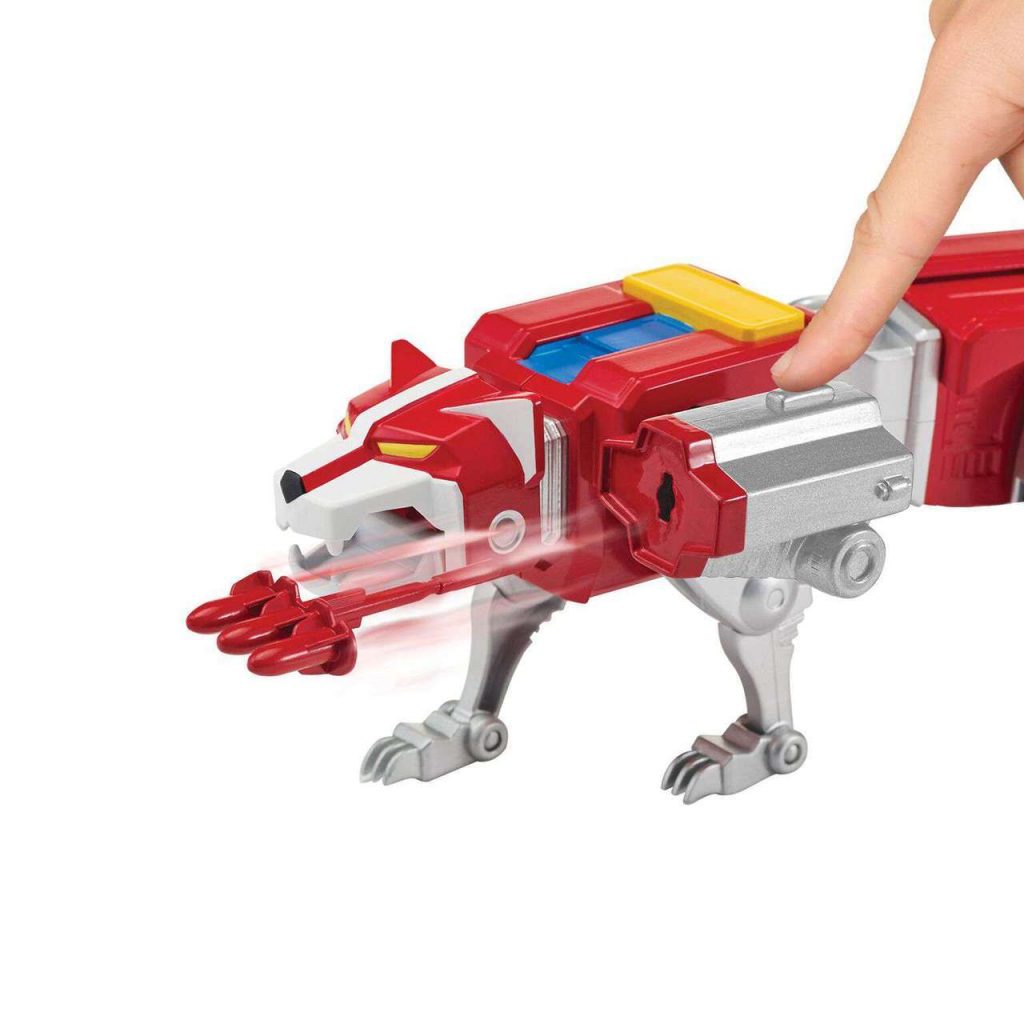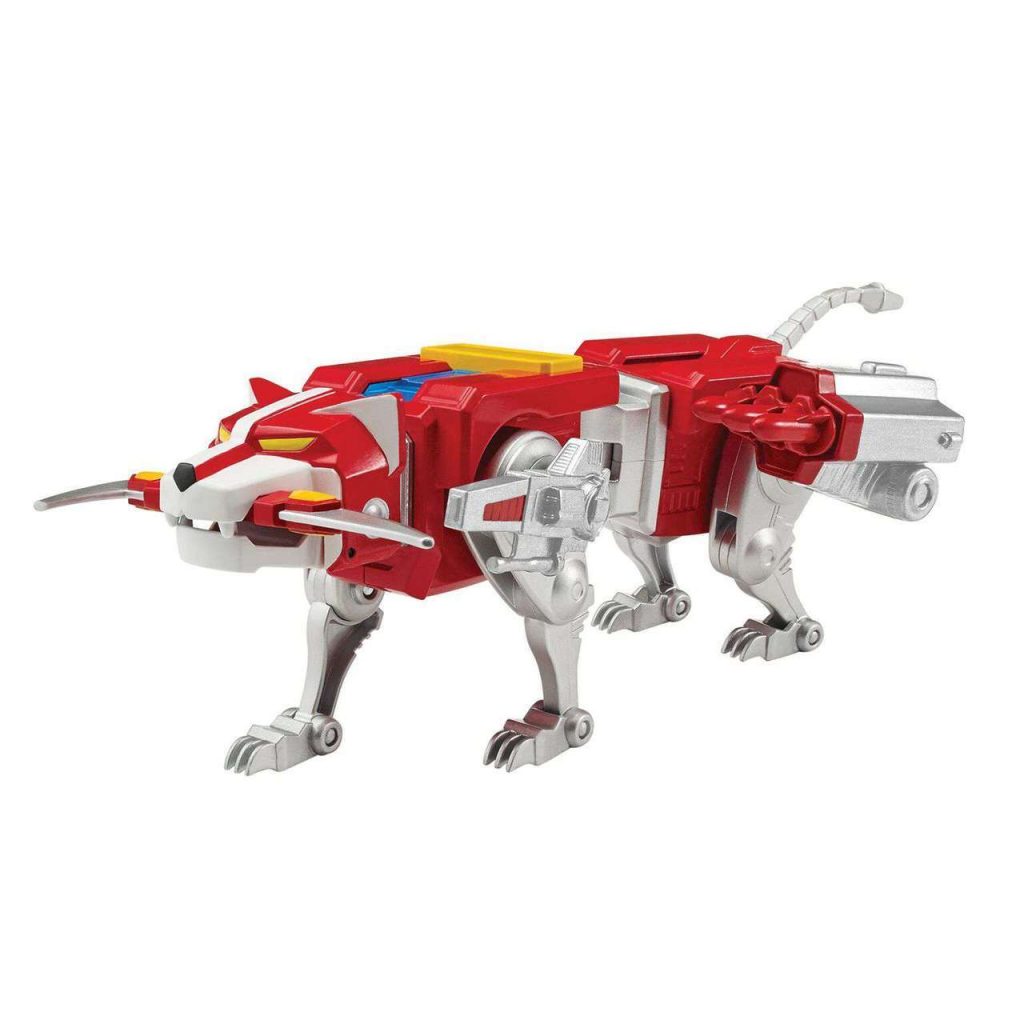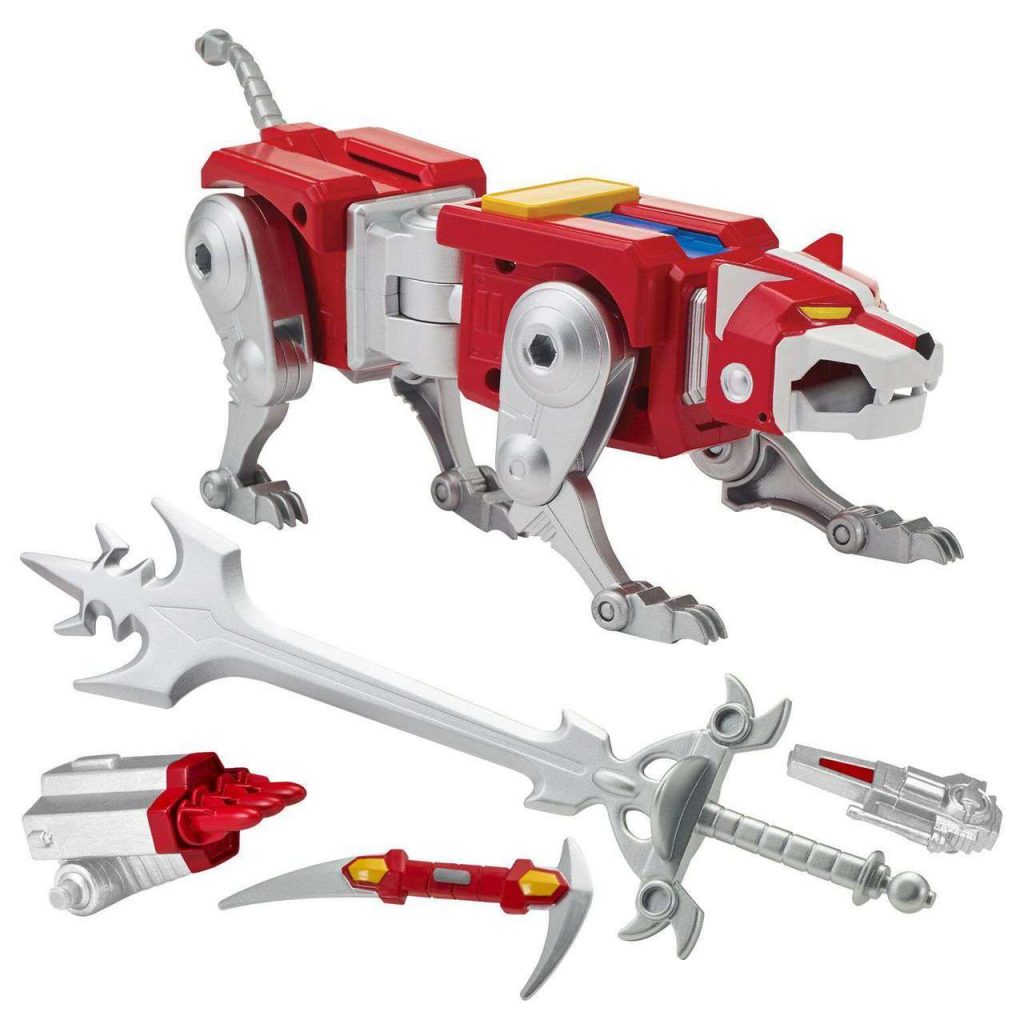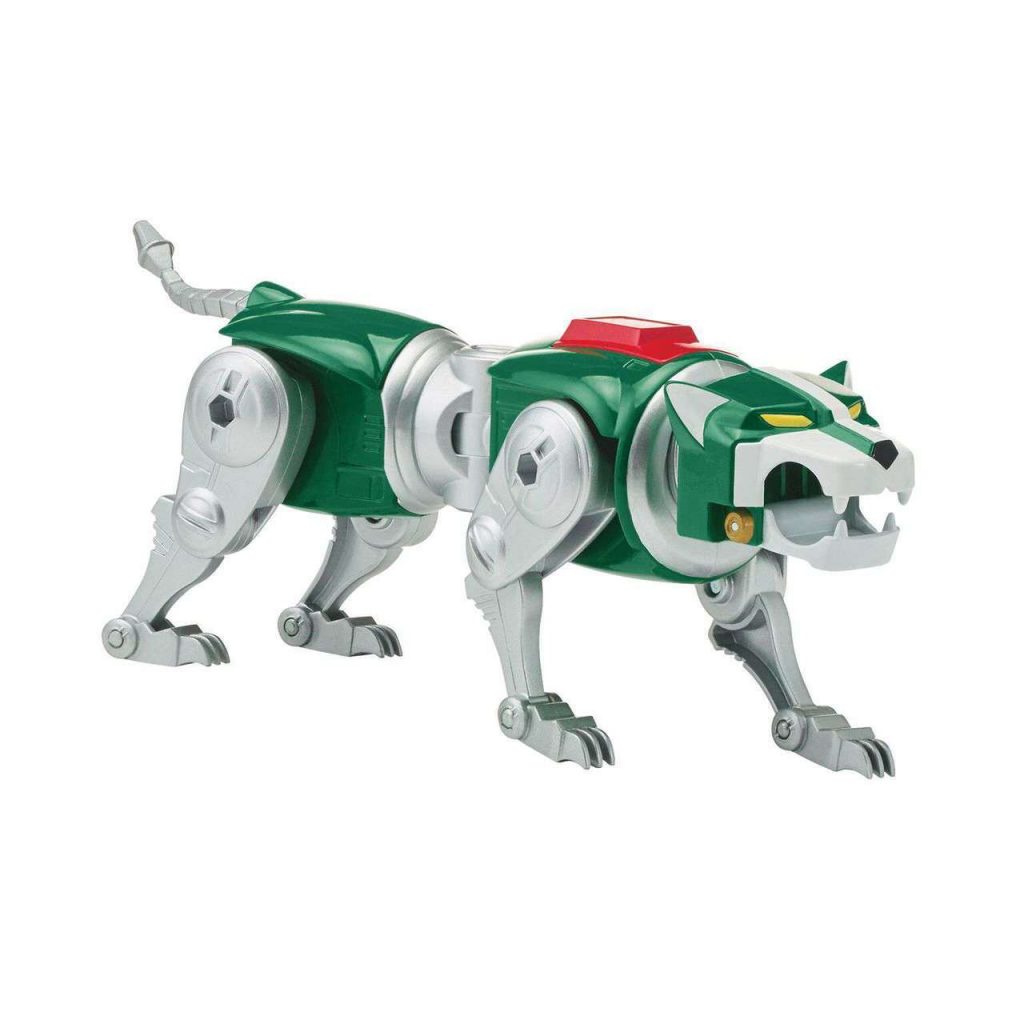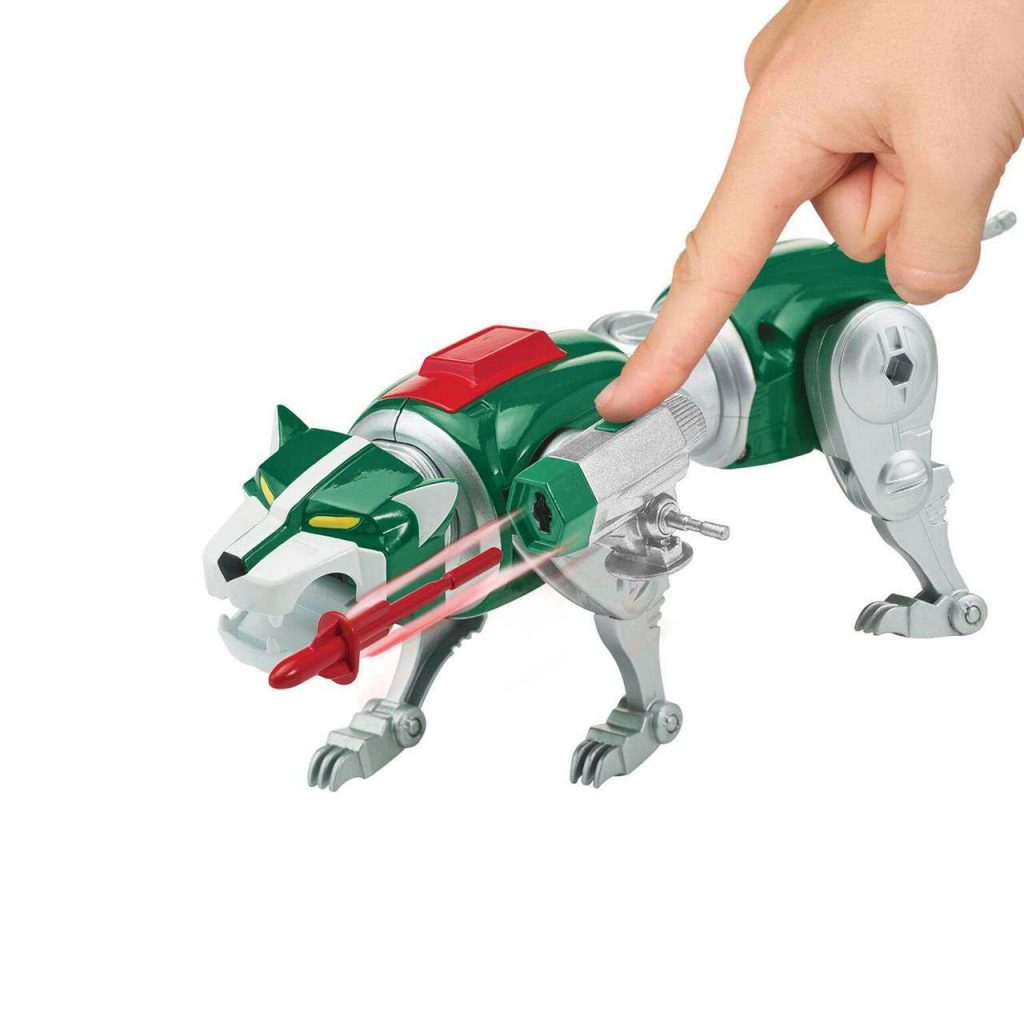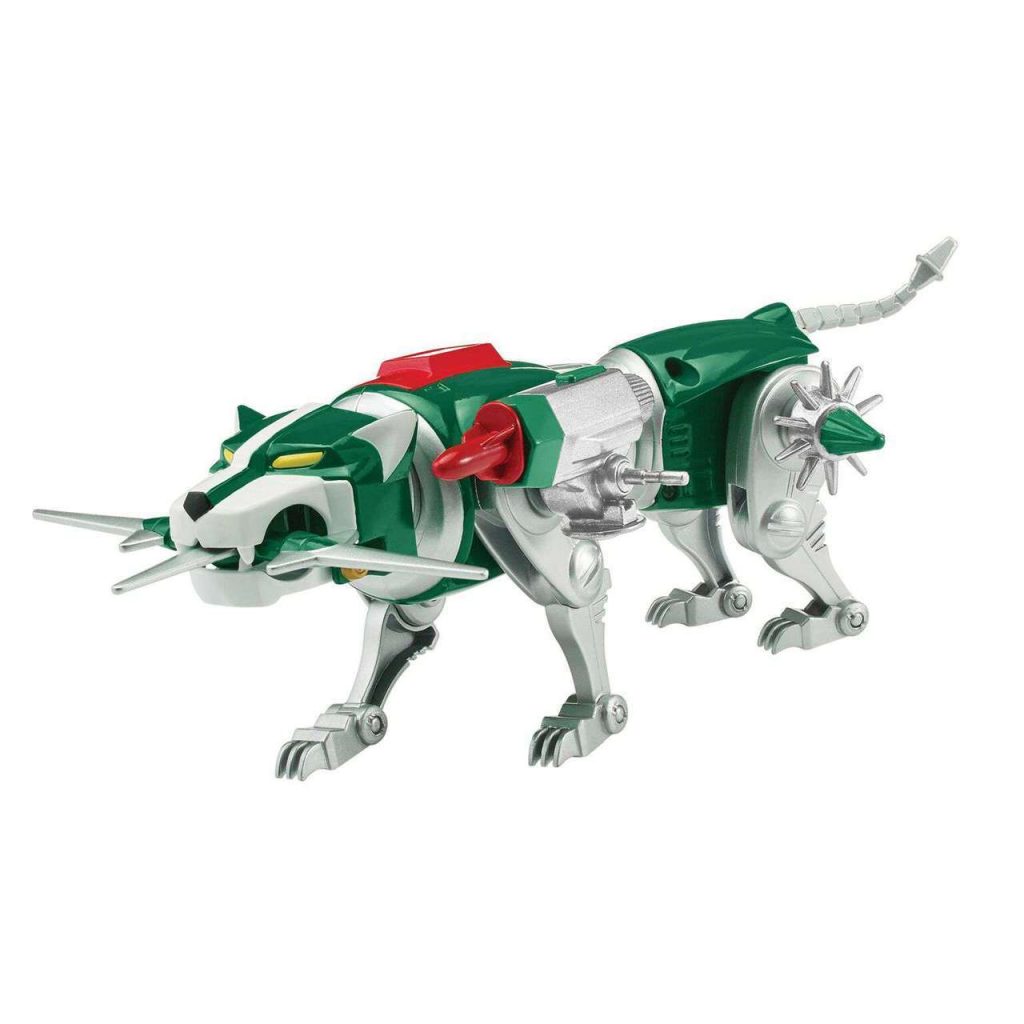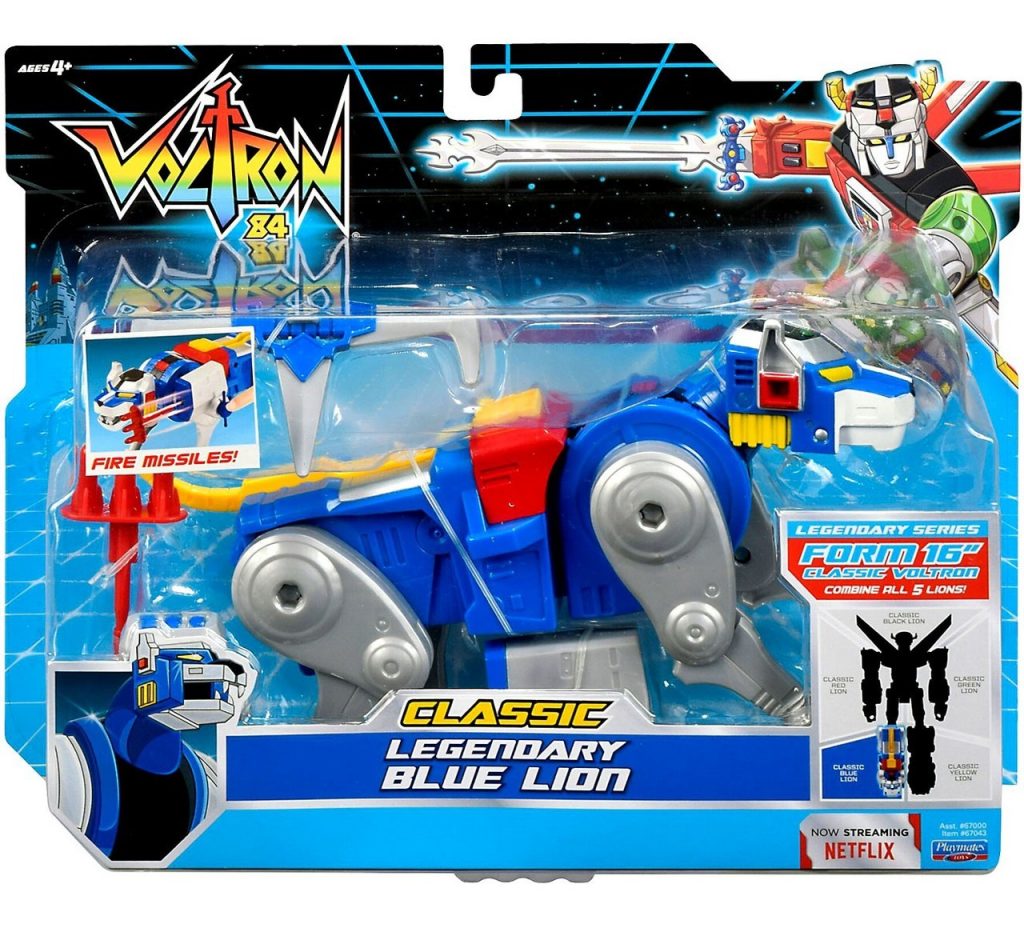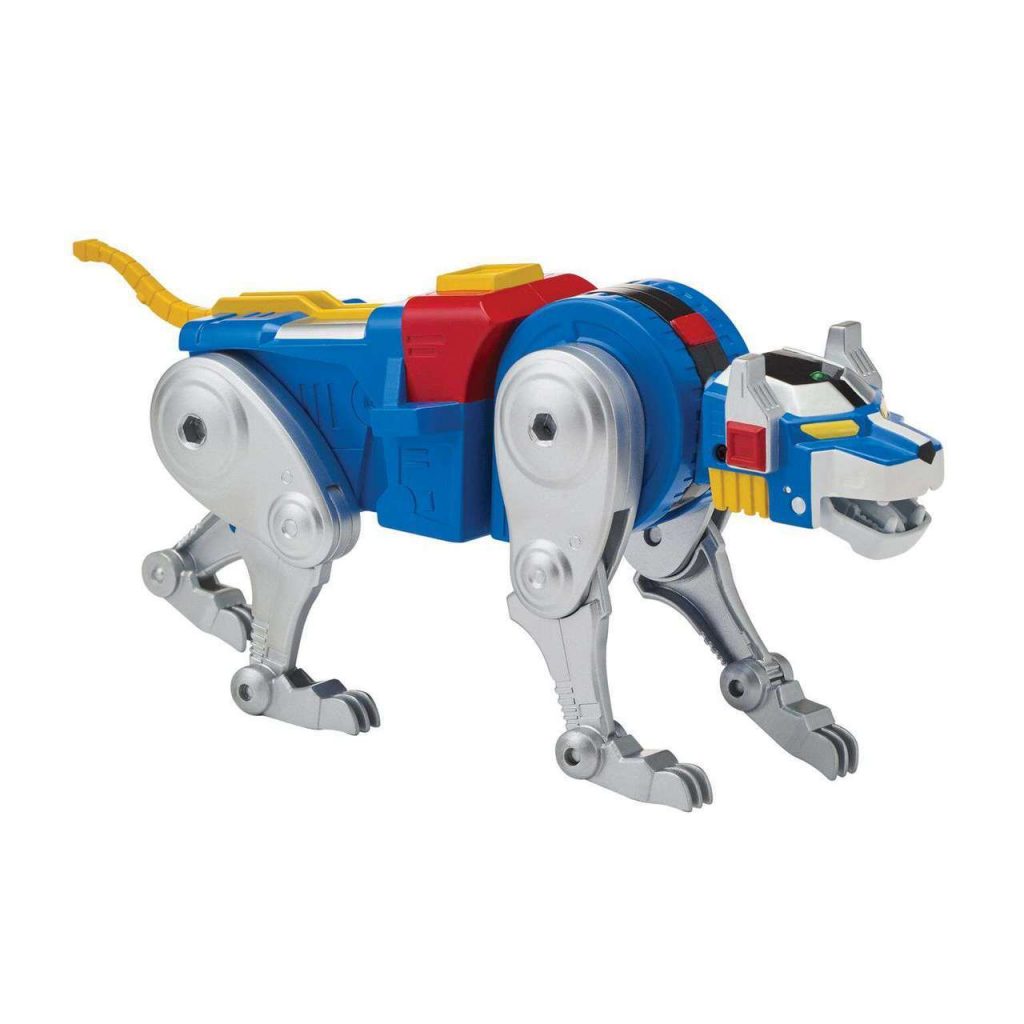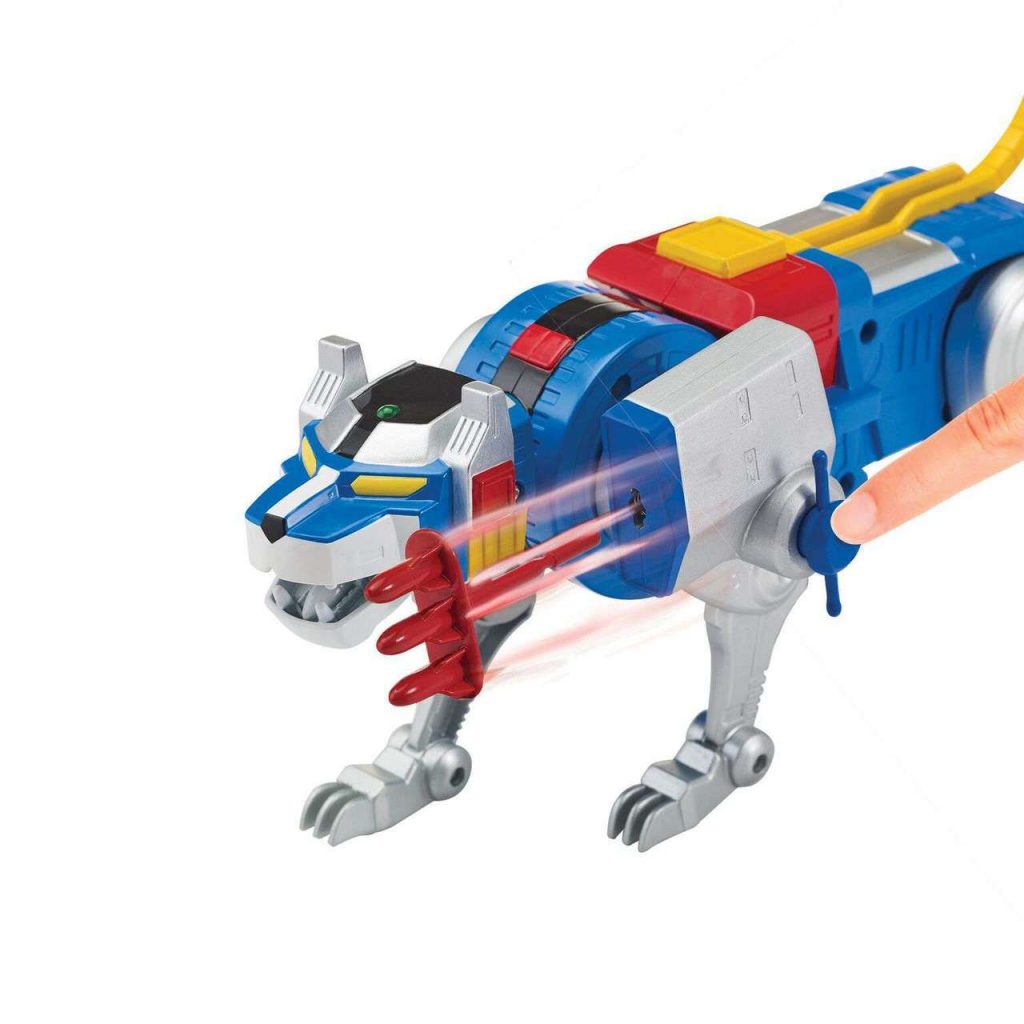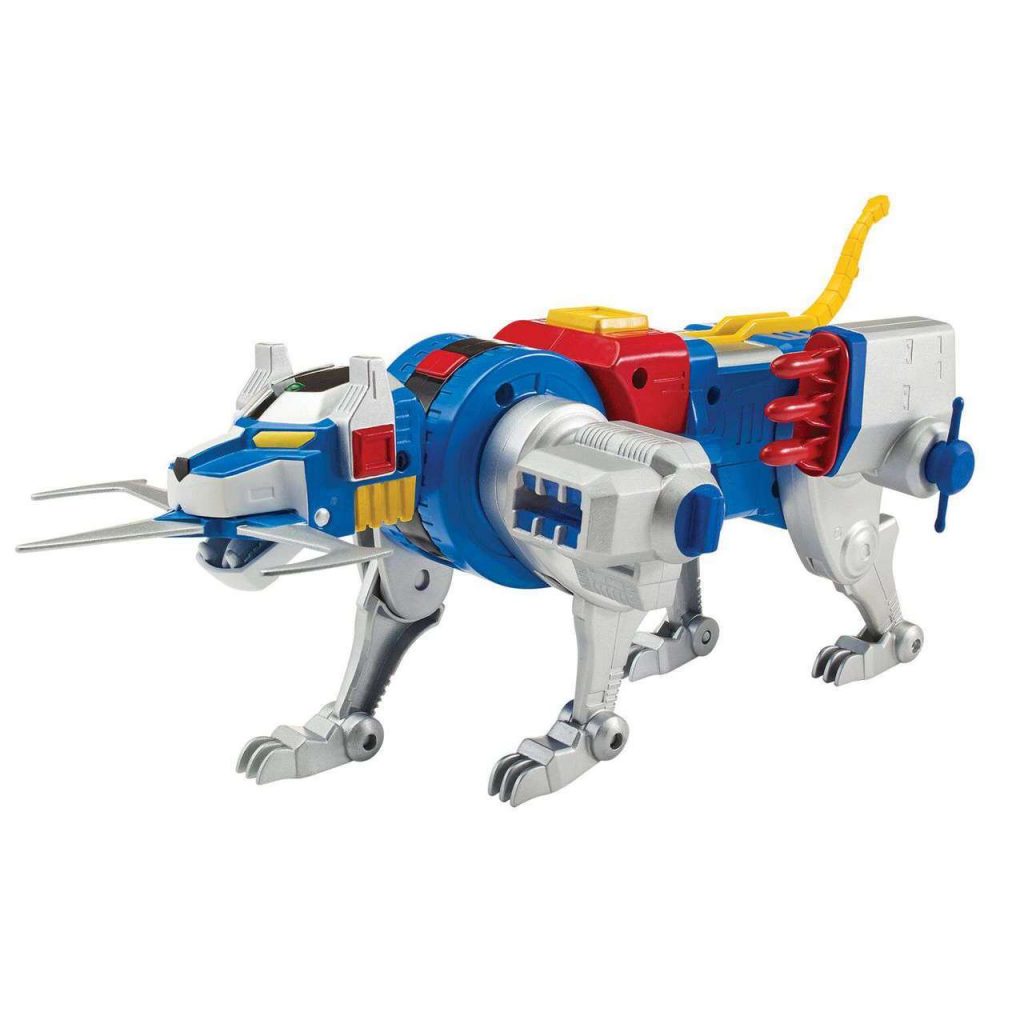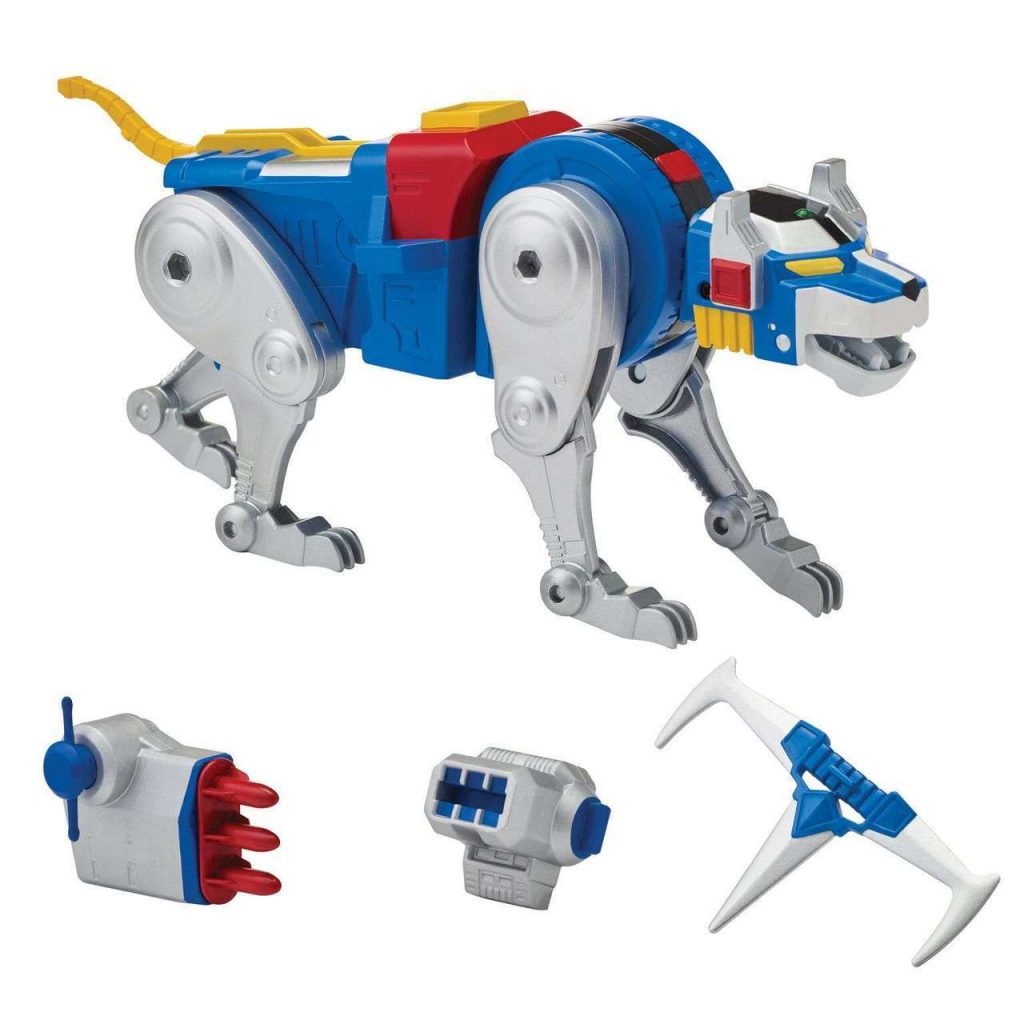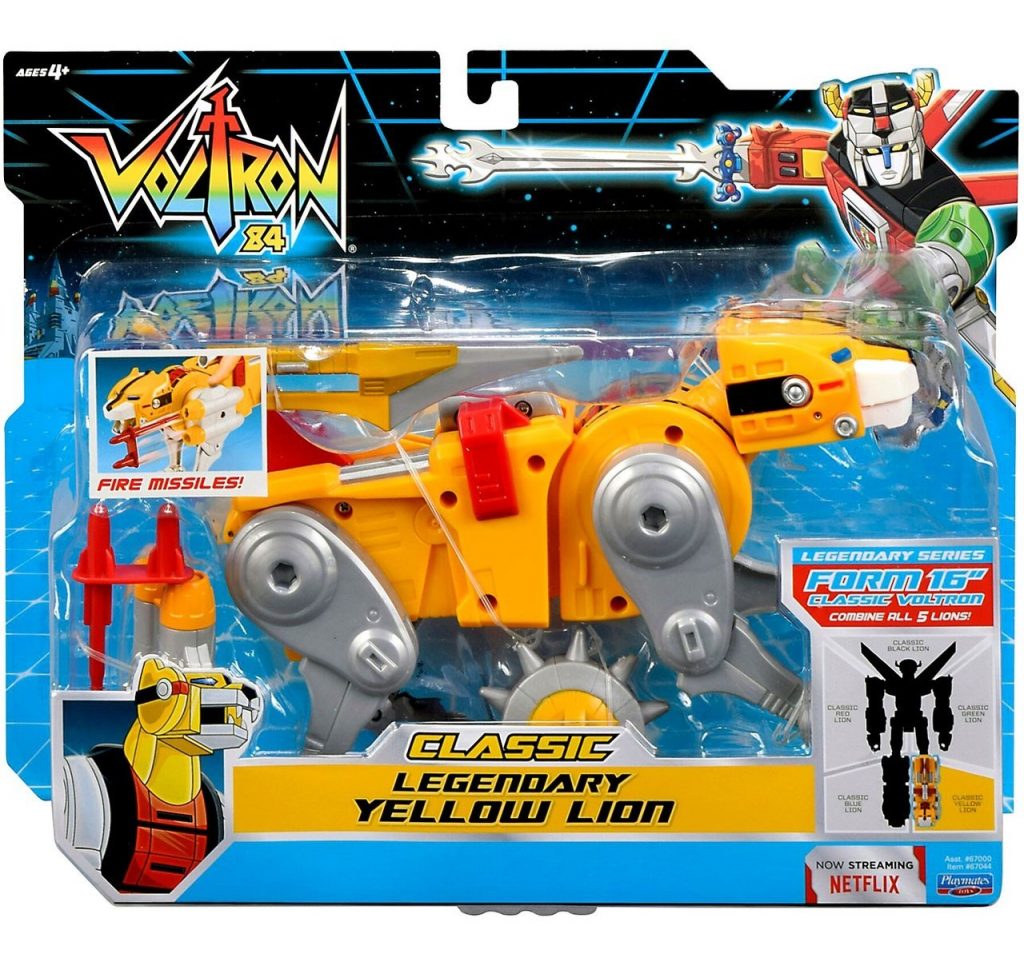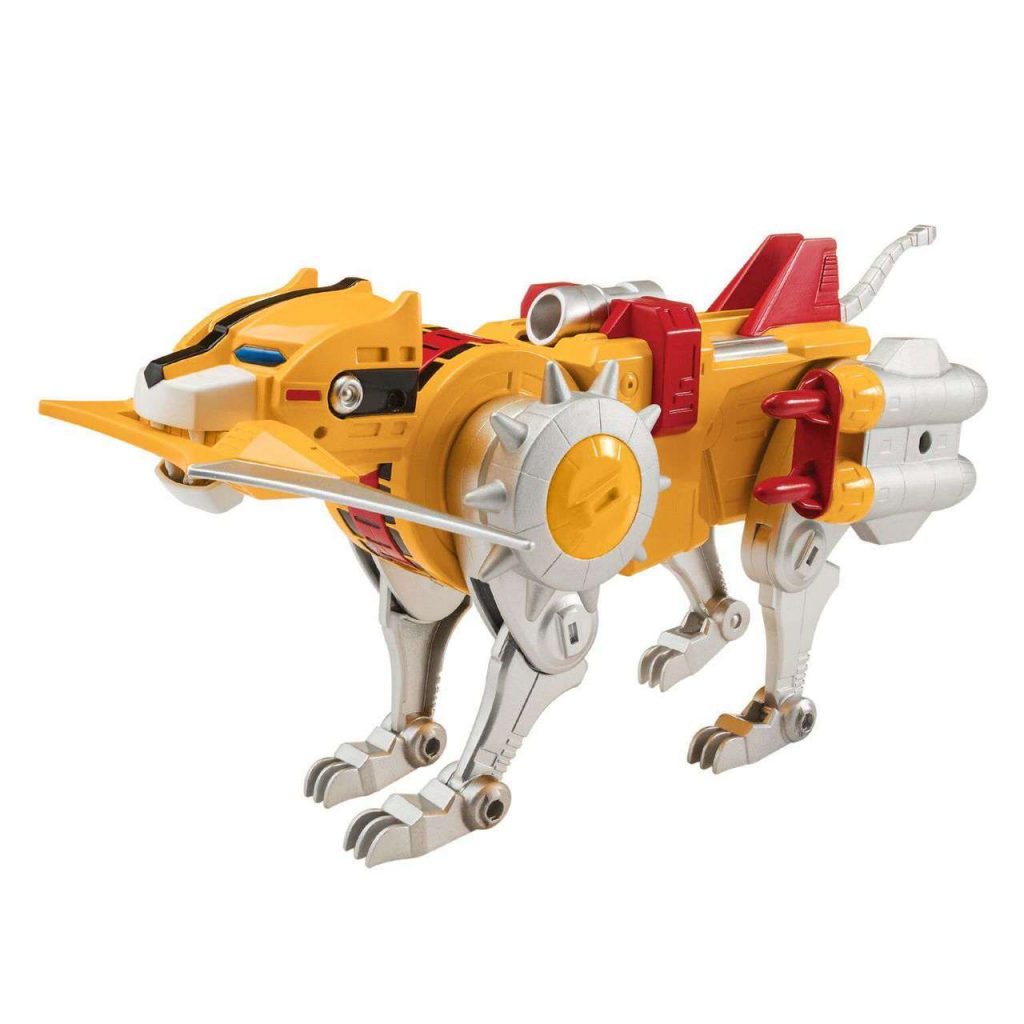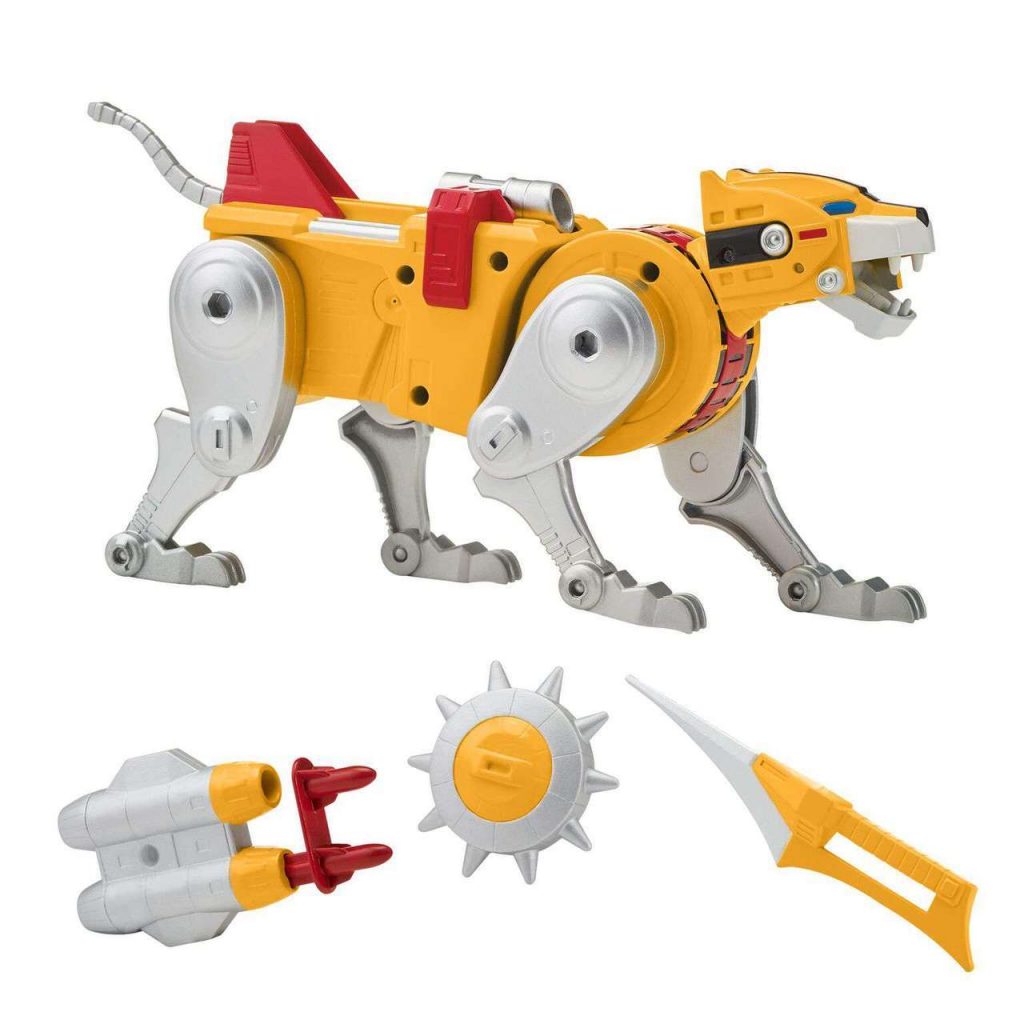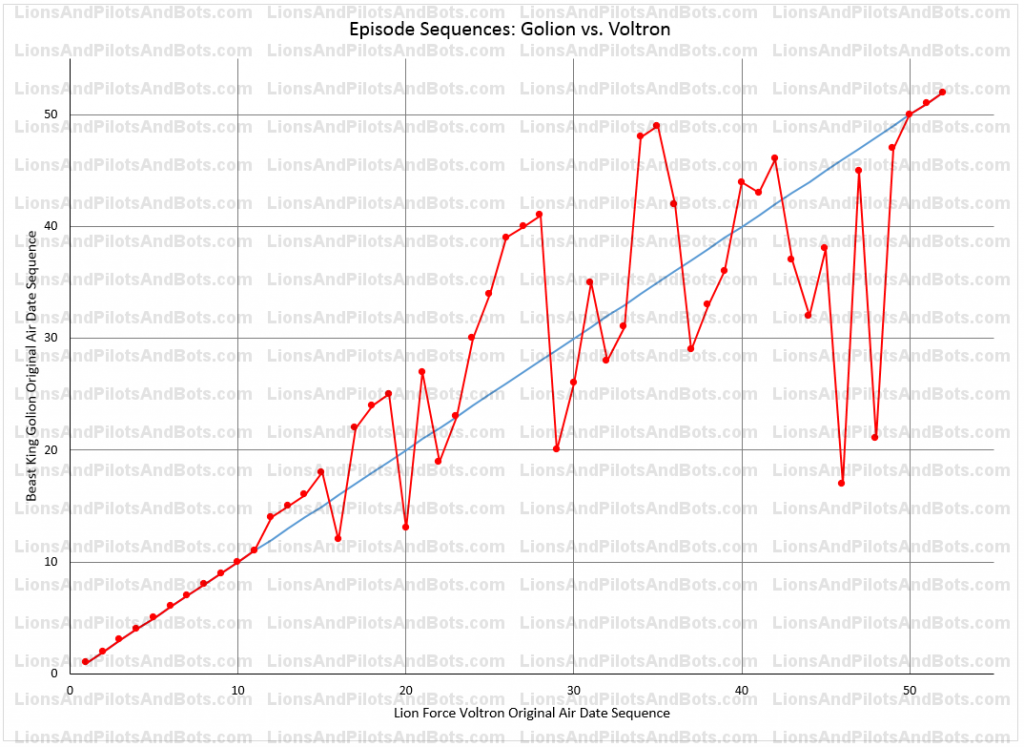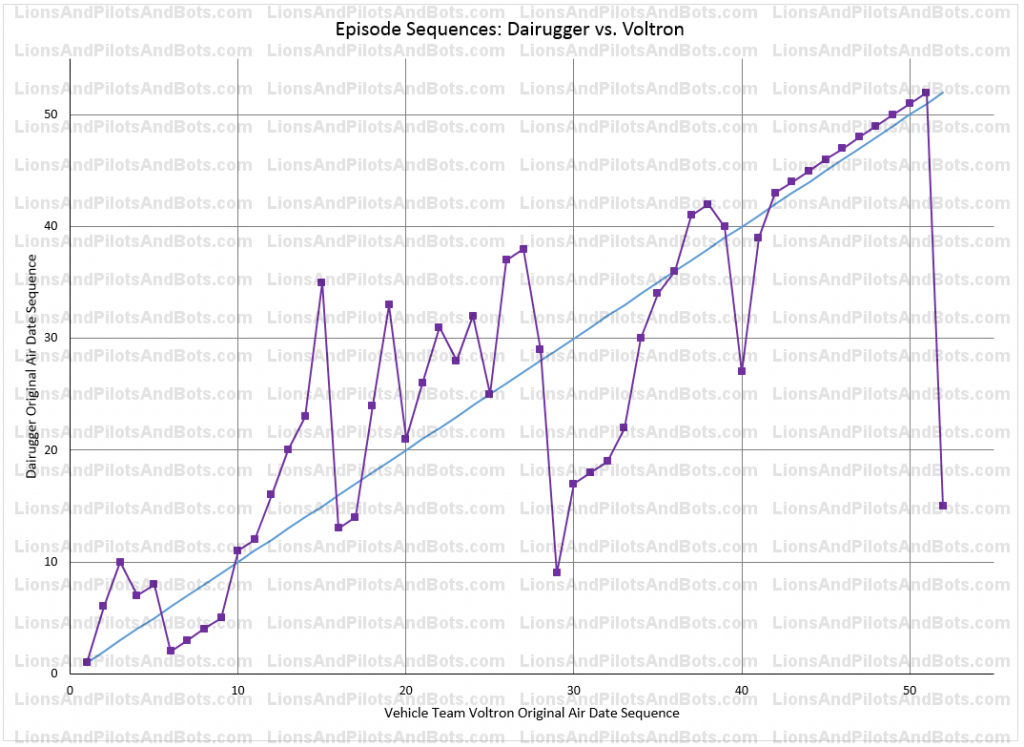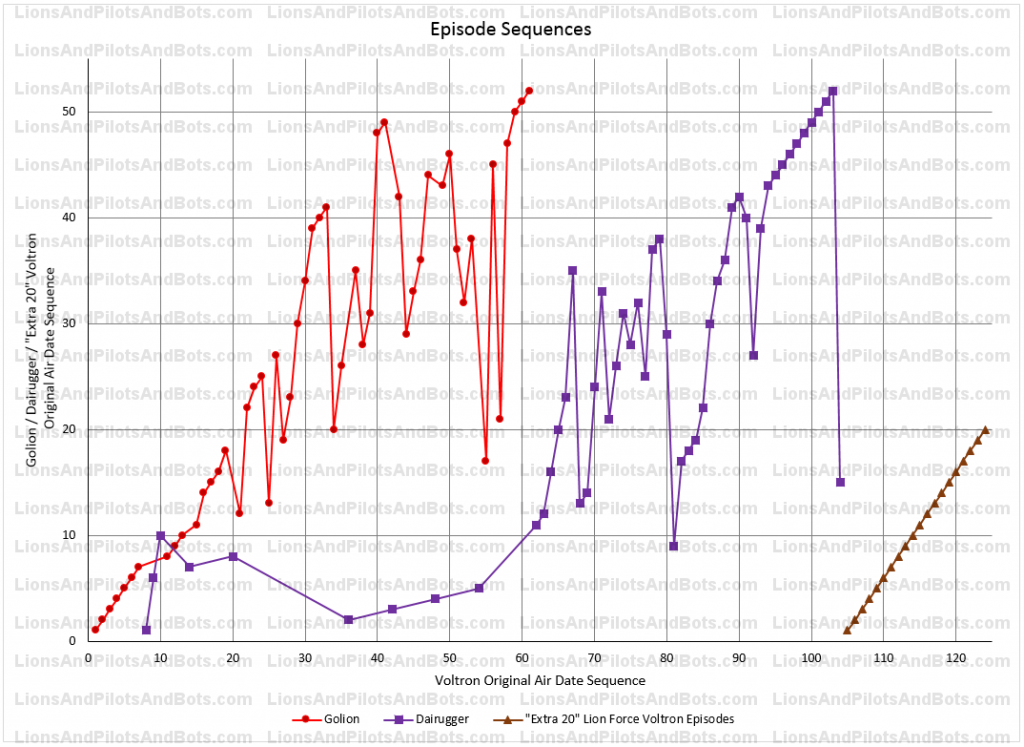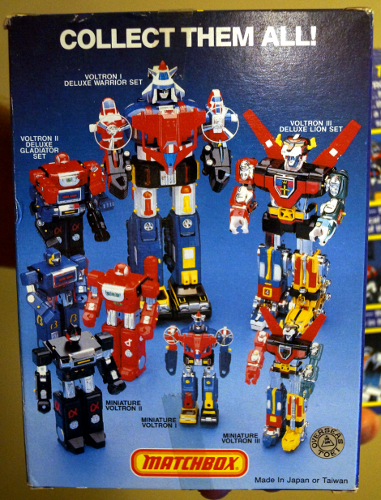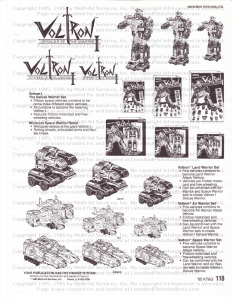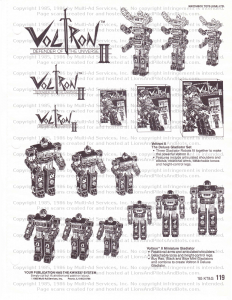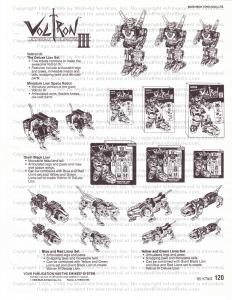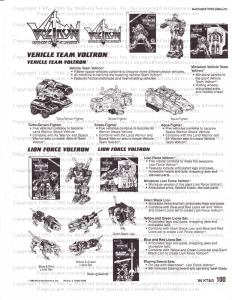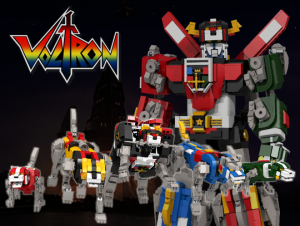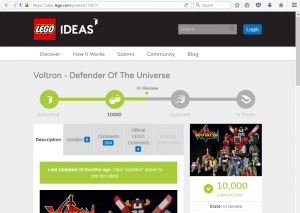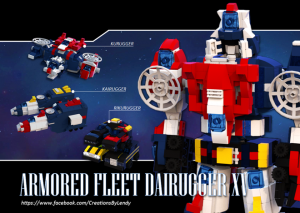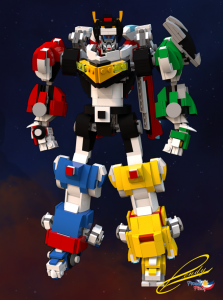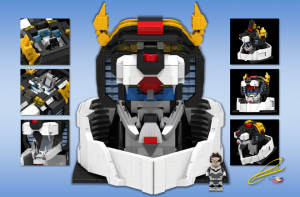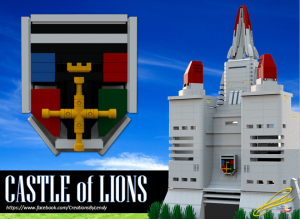(This article is based on material that I wrote for the “Voltron 101” episode of Let’s Voltron: The Official Voltron Podcast.)
Introduction
This article is a primer for all things Voltron. If you’re a new fan who was introduced to Voltron through the all-new series, Voltron: Legendary Defender, and you’re curious about what came before, then this article is for you. If you’re a fan from days of long ago – 1984 – and you’re curious about what came after, then this article is for you. If you’re the friend or loved one of a Voltron fan, or if you can’t tell Voltron from Optimus Prime, then this article is for you.
This article focuses only on the various Voltron television programs. It skips details about the making of these shows, and it skips some of the more arcane facts about the shows. That’s because the goal is to welcome as many readers as possible to the entirety of the Voltron universe, without overwhelming you with too much information.
Premise
Voltron is about a group of young heroes who protect all that is good from all that is evil, with the help of their incredible machines that can easily hold their own in battle. In times of great danger, these heroes can combine their machines into a super robot called Voltron. Just as the super robot Voltron is more powerful than its individual components, Voltron’s pilots, when working together, comprise a whole that is far greater than the sum of its parts. In short, Voltron is fantastic sci-fi action that focuses on a very down-to-earth concept: overcoming incredible obstacles through the power of friendship and teamwork.
Voltron: Defender of the Universe (1984-1986)
On Monday, September 10, 1984, kids of all ages were captivated with amazing sights and sounds as a new animated television series first hit air waves. The series was called Voltron: Defender of the Universe.
Lion Force
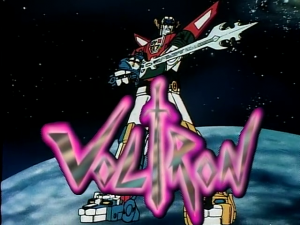
The series’ earliest episodes focus on the Voltron Lion Force – a team of five, brave space explorers who operate five distinctly colored robot lions. Team leader Keith controls the Black Lion. The sarcastic Lance operates the Red Lion. The short, spectacled and smart Pidge flies the Green Lion. The brawny, tough, yet soft-hearted Hunk pilots the Yellow Lion, and the pensive, noble Sven controls the Blue Lion. The space explorers discover the Lions on a planet called Arus – a planet that had been devastated, and its population decimated, by prolonged conflict with the forces of the evil King Zarkon of Planet Doom. Among the casualties of this conflict was Planet Arus’ king, Alfor, leaving his daughter, Princess Allura, the only surviving member of the royal family. As the forces of Planet Doom – Zarkon, witch Haggar, and eventually Zarkon’s son, Prince Lotor – continue their attacks on Arus and other planets in the Far Universe, the Voltron Force defend the innocent using their mighty Lions. Often Zarkon would send a Robeast – an enormous, magic-enhanced, mechanical monster – and to defeat it, the Voltron Force would combine their Lions into Voltron.
Soon after the series begins, Blue Lion pilot Sven is seriously injured during a skirmish with Haggar. Sven is taken to the planet Ebb in order to heal, and Princess Allura succeeds him as pilot of the Blue Lion. As the Lion Force story progresses, Zarkon becomes an even more dangerous threat, Prince Lotor becomes increasingly obsessed with marrying the unwilling Princess Allura, and the Voltron Force continues to fight on behalf of the good people whom Zarkon seeks to conquer.
Vehicle Team
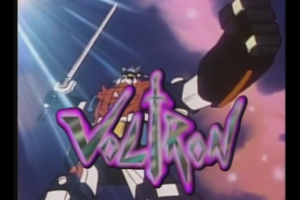
As the Voltron Lion Force defends the Far Universe, the Near Universe is protected by another group of space explorers – the Voltron Vehicle Team.
The Voltron Vehicle Team is assigned to the Stellar Ship Explorer, which explores the universe in search of knowledge, new allies, and habitable planets on which people of the overcrowded planets of the benevolent Galaxy Alliance can settle and establish new homes. The Voltron Vehicle Team’s 15 members are divided equally into three sub-teams – the Air Team, led by hot-headed Voltron Force captain Jeff; the Sea Team, led by the insightful alien Krik; and the Land Team, led by the level-headed geologist Cliff. Each team member operates an advanced, combat-ready exploration vehicle.
An additional function of this Voltron Force is defense against the attacks of the Drule Empire, a militaristic force that seeks to dominate the universe. Like Zarkon, the Drules often use their own Robeasts in their offensives against the Explorer and its allies. To protect the Explorer and the Galaxy Alliance, the Voltron Vehicle Team can combine the 15 vehicles into an entirely different Voltron.
As the Vehicle Team story progresses, the Drules discover that their obsession with war is destroying their own home planet. While Drule leaders stubbornly and relentlessly escalate their campaign against the Galaxy Alliance, Commander Hazar eventually goes rogue and pursues peace with the Galaxy Alliance, in order to save his people from the imminent destruction of his home world. Unfortunately, the peace-seeking efforts of Hazar and the Voltron Force are repeatedly thwarted by ongoing battles between the Drule military and the Galaxy Alliance.
Episodes
Voltron: Defender of the Universe consists of 125 episodes. 72 episodes feature the Voltron Lion Force, 52 episodes feature the Voltron Vehicle Team, and the final adventure, “Fleet of Doom,” features the Lion Force and Vehicle Team fighting side by side against the combined forces of King Zarkon and the Drule Empire.
Among television viewers, the Lion Force characters and robot proved to be much more popular than their Vehicle Team counterparts, to the point that the Vehicle Team has not yet been featured in any subsequently produced Voltron television program.
Anime Roots
Although most fans of Voltron: Defender of the Universe didn’t know it at the time, Voltron was produced using animation from two unrelated anime programs. Voltron’s Vehicle Team episodes were based on Armored Fleet Dairugger XV, and the first 52 Lion Force episodes of Voltron were based on Beast King Golion. The remaining episodes were animated specifically for Voltron. The Golion and Dairugger programs included violent content that Voltron’s producers thought to be inappropriate for children’s animation, so the material had to be heavily edited for Voltron.
Perhaps the most notable plot difference between Voltron and the original anime programs is the fate of original Blue Lion pilot Sven. In Voltron, Sven survives his battle with Haggar and eventually falls in love. In Beast King Golion, Sven is called Takashi Shirogane, and he dies as the result of his wounds from his battle with the witch, called Honerva.
Some other differences between Voltron and the original anime are in names of planets. For example, in Voltron, Allura rules Planet Arus, and King Zarkon controls Planet Doom. In Beast King Golion, the princess, named Fala, rules Planet Altea, and the emperor, named Daibazaal, controls Planet Galra.
The final episode of Voltron: Defender of the Universe first aired in 1986, but in 1997, some of the episodes – the 20 Lion Force episodes not adapted from Beast King Golion – were re-packaged as an entirely different series called The New Adventures of Voltron. This series has a flashy, computer-animated opening that gave its viewers a glimpse at what the next Voltron television series would be like.
Voltron: The Third Dimension (1998-2000)
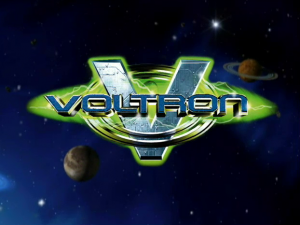
On Saturday, September 12, 1998, Voltron: The Third Dimension premiered. This series is a “quasi-sequel” to the original Voltron program. Many of the recurring characters from the Lion Force episodes of Voltron: Defender of the Universe are featured in this series, and four of the original show’s voice cast members reprise many of their key roles in this series. The story begins about five years after a pivotal battle between the Voltron Force and Prince Lotor. Lotor had been severely injured during that battle, and his scarred body had to be augmented with cybernetic components in order to survive. The Voltron Force had disbanded and moved on with their lives. Zarkon had reformed and become minister of peace of the Galaxy Alliance, Haggar had disappeared, and the Galaxy Alliance’s 900 member worlds had entrusted governing duties to a robot called Amalgamus.
Voltron: The Third Dimension looks much different than its predecessor. Instead of traditional cel-based animation, The Third Dimension incorporates 3D-based computer generated imagery, or CGI. The animation was cutting-edge for its time, but it looks dated today.
In the first episode, Lotor escapes from a high-security prison, reconnecting with Haggar and resuming his attacks against the Galaxy Alliance. The Voltron Force reunites in order to stop him. As the story progresses, the Voltron Force often finds its hands tied due to Amalgamus’ reluctance to use the Lions, thinking it will cause unrest within the Alliance. Princess Allura learns more about the origins of the Voltron Lions. Eventually the Voltron Force has to save the entire Galaxy Alliance from Lotor, Haggar… and an ally who turns out to be less than trustworthy.
Although Voltron: The Third Dimension seems to be the least popular Voltron program among fans, it is entertaining, and it deserves more consideration than it often receives.
The 26th and final episode of Voltron: The Third Dimension aired in February 2000. Eleven years later, Voltron was needed once more.
Voltron Force (2011-2012)
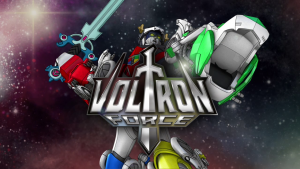
On Thursday, June 16, 2011, Voltron Force premiered. Like Voltron: The Third Dimension, but unrelated to that show, Voltron Force is another “quasi-sequel” to the original Voltron program. Many of the recurring characters from the Lion Force episodes of Voltron: Defender of the Universe are featured in this series, although they are performed by different voice actors. The story begins several years after a pivotal battle between the Voltron Force and Lotor, now King of Planet Doom. Lotor was killed during the battle, and Haggar had disappeared. During a victory celebration on Earth, the Voltron Lions, minus their pilots, had inexplicably attacked a city, forcing Sky Marshall Wade of the Galaxy Alliance to lock up the Lions. The Voltron Force then disbanded and moved on with their lives.
In the first, feature-length episode, Lotor is brought back to life by a mysterious occult scientist called Maahox. Now infused with a dark energy called Haggarium, Lotor poses an even greater threat to the Galaxy Alliance than before, forcing the Voltron Force to disobey Sky Marshall Wade and reactivate the Voltron Lions. The Voltron pilots also take on three cadets: the impulsive Daniel, who dreams of piloting Black Lion and leading the Voltron Force; Vince, an intellectual but reluctant hero; and Princess Larmina, niece of Allura, who is highly skilled in hand-to-hand combat. Each Voltron Force pilot and cadet has a Voltcom – a gauntlet that can generate weapons catered to its wearer, as well as unlock long-hidden capabilities of Voltron, such as the ability of any of the five Lions to form Voltron’s torso and head, giving Voltron powers that are specific to the center Lion.
As the Voltron Force story progresses, Lotor and Maahox escalate their attacks, Sky Marshall Wade is revealed to be obsessed with power, Maahox is found to have his own evil motives, and the three Voltron Force cadets learn what it takes to be Voltron pilots.
The final episode of Voltron Force aired in April 2012. The series ended with a cliffhanger that has not been fully resolved, although a brief continuation of the plot is depicted in comic book form as the epilogue of a book called Voltron: From Days of Long Ago: A Thirtieth Anniversary Celebration. Let’s Voltron podcast host Marc Morrell was a co-author of this book. Check it out!
(Depending on one’s perspective, Voltron Force‘s episode count is either 26 or 24. As released on DVD in Region 4, Voltron Force consists of 26 half-hour episodes; however, when the series first aired on NickToons, the first three episodes were presented as a single, feature-length episode. The series is usually described as having 26 episodes.)
With twelve years between the end of Voltron: Defender of the Universe and the start of Voltron: The Third Dimension, and eleven years between the end of Voltron: The Third Dimension and the start of Voltron Force, one might have surmised that another Voltron television series wouldn’t debut until the mid-2020s. Fortunately, this time, Voltron was needed much sooner.
Voltron: Legendary Defender (2016-Present)
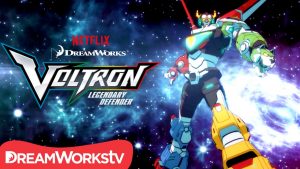
On Friday, June 10, 2016, Voltron: Legendary Defender premiered, with the entire eleven-episode first season being made available exclusively on Netflix. This series is an overt reboot of the Lion Force Voltron concept from Voltron: Defender of the Universe. The series’ showrunners have strived to make this new series as fun and entertaining as what long-time fans remember having watched over 30 years before. The characters were redesigned, but they were made to look similar enough to the original designs that they’d pass a “squint test.”
At a glance, the story begins much as Voltron: Defender of the Universe does: a team of five, brave space explorers find themselves becoming pilots of five distinctly colored robot lions. Some of the Lion/pilot assignments different in this series: although as before, Pidge flies the Green Lion, and Hunk pilots the Yellow Lion, Keith now controls the Red Lion, and Lance operates the Blue Lion. The Black Lion is now piloted by Shiro, the team leader, who is named after Takashi Shirogane from Beast King Golion – called Sven in Voltron: Defender of the Universe. As in previous Voltron programs, the Lion pilots – called Paladins in this series – can combine the Lions to form Voltron. The paladins are assisted by Princess Allura and her advisor, Coran. Their opponents are Emperor Zarkon, witch Haggar, and the Galra Empire.
Beyond the obvious similarities between Voltron: Legendary Defender and Voltron: Defender of the Universe, the two series are quite different. Most of the characters in the new series have compelling back stories and/or specific motivations that add depth and interest. One year before the events of the first episode, Shiro, and Pidge’s father and brother, had been exploring a moon of Pluto when they were abducted by the Galra. In the first episode, Shiro mysteriously returns to Earth with no memory of how he escaped the Galra – but Pidge’s family remains missing. When the future Voltron paladins discover Princess Allura and Coran, the pair had been in suspended animation for 10,000 years, during which time Zarkon had destroyed Altea and expanded his empire. Keith and Lance have a standing rivalry, and Pidge has a secret identity of sorts. Zarkon seeks not to destroy Voltron, but instead to capture it.
Voltron: Legendary Defender is a return to the original Voltron concept, with modern storytelling sensibilities, rich characterizations, high action, and top-notch writing and production values.
As of this writing, in April 2017, two seasons of Voltron: Legendary Defender have been released on Netflix, and a third season was officially announced at WonderCon 2017.
How to Watch
Here’s how can you watch Voltron.
Voltron: Defender of the Universe
- Select episodes can be watched on the official Voltron YouTube channel (youtube.com/user/WEP).
- All episodes are viewable on Amazon Video and iTunes.
- In March 2017, twelve episodes were released on Netflix as part of a “series” called Voltron 84. Each episode is introduced by a cast or crew member from Voltron: Legendary Defender.
Voltron: The Third Dimension
- Select episodes can be watched on the official Voltron YouTube channel (youtube.com/user/WEP).
- All episodes are viewable on Amazon Video and iTunes.
Voltron Force
- Select episodes can be watched on the official Voltron YouTube channel (youtube.com/user/WEP).
- Voltron Force is occasionally available on Netflix, although it’s not available as of this writing.
- All episodes were also released on now out-of-print DVDs.
Voltron: Legendary Defender
- All episodes of Voltron: Legendary Defender are available exclusively on Netflix.
Beast King Golion
- Select episodes can be watched on the official Voltron YouTube channel (youtube.com/user/WEP).
Armored Fleet Dairugger XV
- As of this writing, the only way to watch Armored Fleet Dairugger XV is through now out-of-print DVDs.

